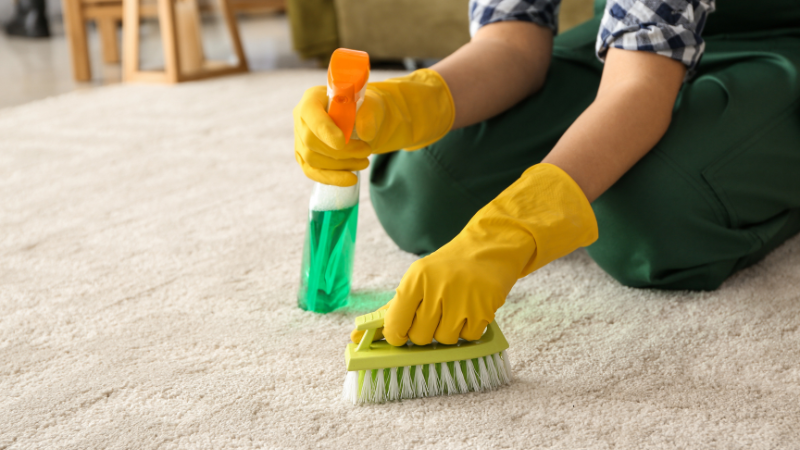Maintaining a clean and healthy living space is essential for every homeowner. One crucial aspect many tend to overlook is the importance of mold prevention in wall-to-wall carpet. Mold can silently attack your home, turning it from a cozy haven into a health hazard. Implementing effective mold prevention strategies within your carpets is vital for preserving a safe environment.
Mold prevention in wall-to-wall carpet not only protects your home but also saves you from potential long-term costs and health issues. Carpets are sumptuous, warm, and they add a touch of sophistication to any setting. However, they can also harbor mold if certain conditions exist like moisture and lack of airflow. By understanding the causes and adopting preventive measures, everyone from homeowners to business owners can ensure their carpets stay mold-free.

Why Mold is a Problem
Mold in carpets can cause more harm than just a foul smell. It can jeopardize your health, particularly for those with allergies, asthma, or a weakened immune system. Mold spores can become airborne, slipping unnoticed into your breathing space and causing respiratory issues.
A mold-infested carpet is also detrimental to your home’s aesthetic and financial value. Repair costs can escalate if ignored, so addressing the problem before it becomes uncontrollable is essential.
Understanding Mold Growth
What is Mold?
Mold is a type of fungus that thrives in damp, warm environments. It reproduces through tiny spores and when these spores land on a moist surface, they begin to grow.
Conditions Promoting Mold
Several conditions can lead to mold growth, including:
- Humidity: High humidity levels provide the perfect opportunity for mold to flourish.
- Moisture: Water damage or regular spills can create a hospitable environment for mold.
- Warmth: Molds tend to thrive in warmer temperatures.
Steps for Mold Prevention
Maintain Low Humidity
Keeping indoor humidity below 60% will significantly reduce mold growth risks. Utilize dehumidifiers and ensure proper ventilation throughout your home.
Choose Mold-Resistant Carpets
Opt for carpets made from synthetic fibers, which tend to resist mold better. Also, select a mold-resistant padding as an effective barrier against moisture.
Regular Carpet Cleaning
Vacuuming frequently and performing natural cleaning methods can prevent dirt and bacteria accumulation, thus keeping mold at bay.
Immediate Treatment for Spills
Swiftly blot any spills with a dry cloth and clean the area thoroughly to stop moisture from seeping into the carpet fibers.
Proper Ventilation is Key
Implement Good Airflow
Ensure your home has adequate ventilation. Open windows regularly, use fans, and ensure air circulates freely from room to room. Proper airflow dries out moisture, reducing mold risks.
Know the Signs of Mold
Spotting Mold Early
Stay vigilant for signs of mold such as a musty smell or discolored spots on the carpet. Early detection is crucial to prevent widespread contamination.
Testing for Mold
If you suspect mold, perform a mold test on your carpet. This confirms the presence of mold and helps decide the next steps.
Remediation and Replacement
Effective Mold Remediation
If mold is found, consult experts for mold remediation services. A professional approach ensures complete removal, reducing health risks.
Replacing Moldy Carpets
Sometimes, replacing a mold-infested carpet is the best solution. This can prevent the spread and recurrence of mold.
Protect Indoor Air Quality
Install air purifiers to improve indoor air quality, minimizing the adverse effects of airborne mold spores. Purifiers equipped with HEPA filters are particularly effective.
Consider resources [such as Trusens](https://www.trusens.com/news/blog/removing-mold-from-carpets-and-keeping-it-away/?srsltid=AfmBOopsbdwvosgse1nBxc-3iscoh9PWF5BtGI31UUFv5tO8OEnKRl3y style=’blue; text-decoration: underline;’ rel=’nofollow’), which offer insights into mold removal solutions.

Mold Prevention FAQs
Can mold grow under carpets?
Yes, mold can easily grow under carpets when moisture and warmth are present. Using mold-resistant materials and ensuring proper ventilation helps prevent this.
How often should I clean my carpets?
Vacuum high-traffic areas at least once a week and deep cleaning every 1218 months can prevent mold growth.
What should I do if I find mold in my carpet?
If mold is found, contact a professional for remediation services to ensure a clean and safe environment.
This article contains affiliate links. We may earn a commission at no extra cost to you.


